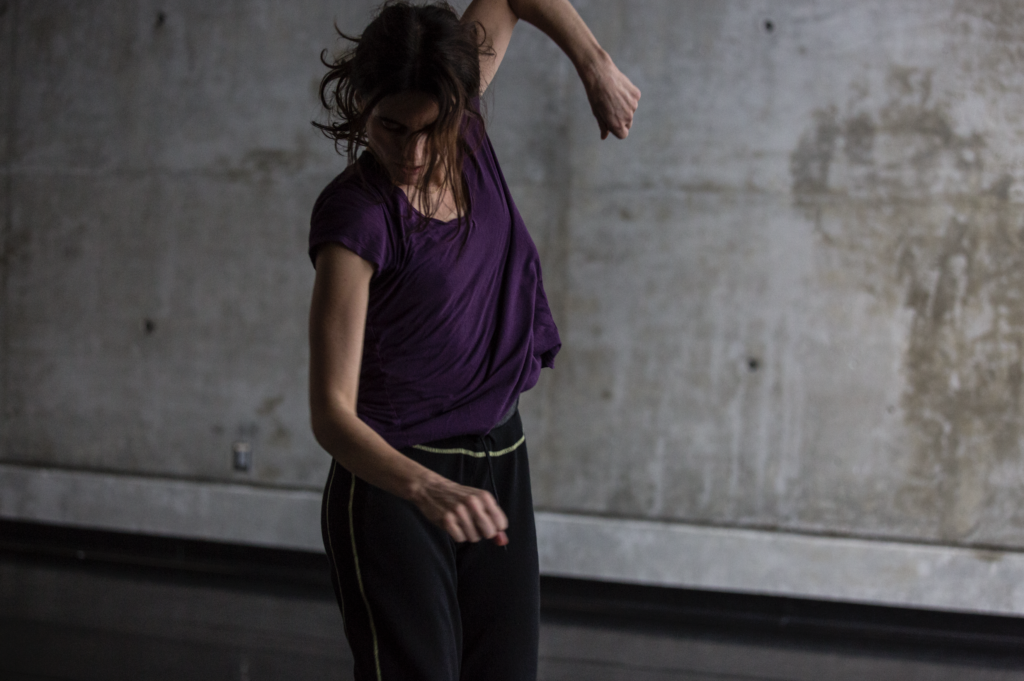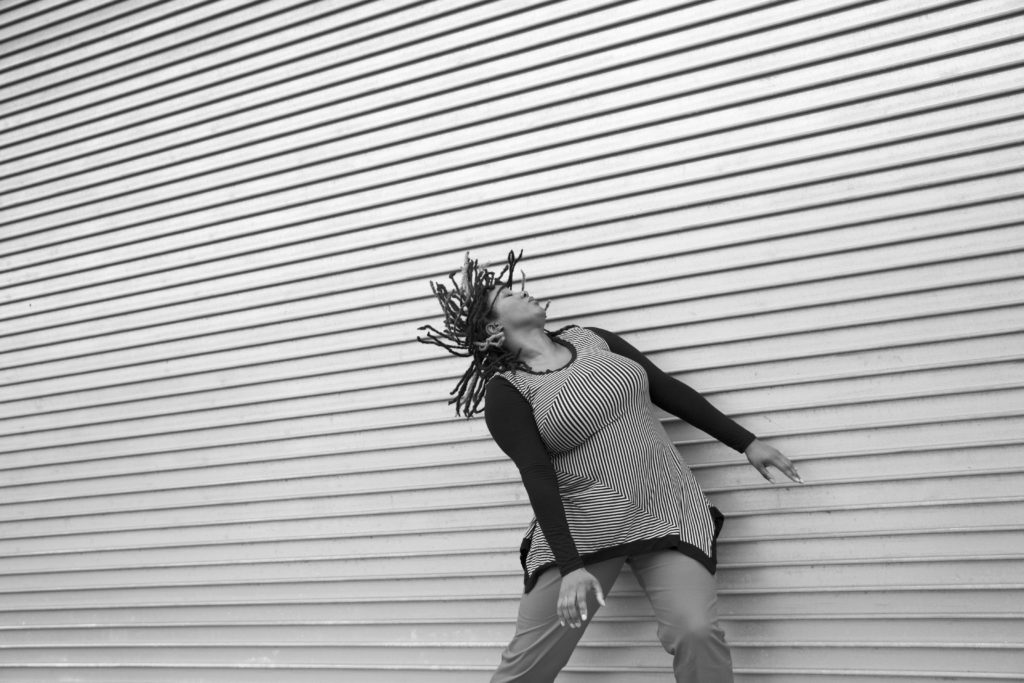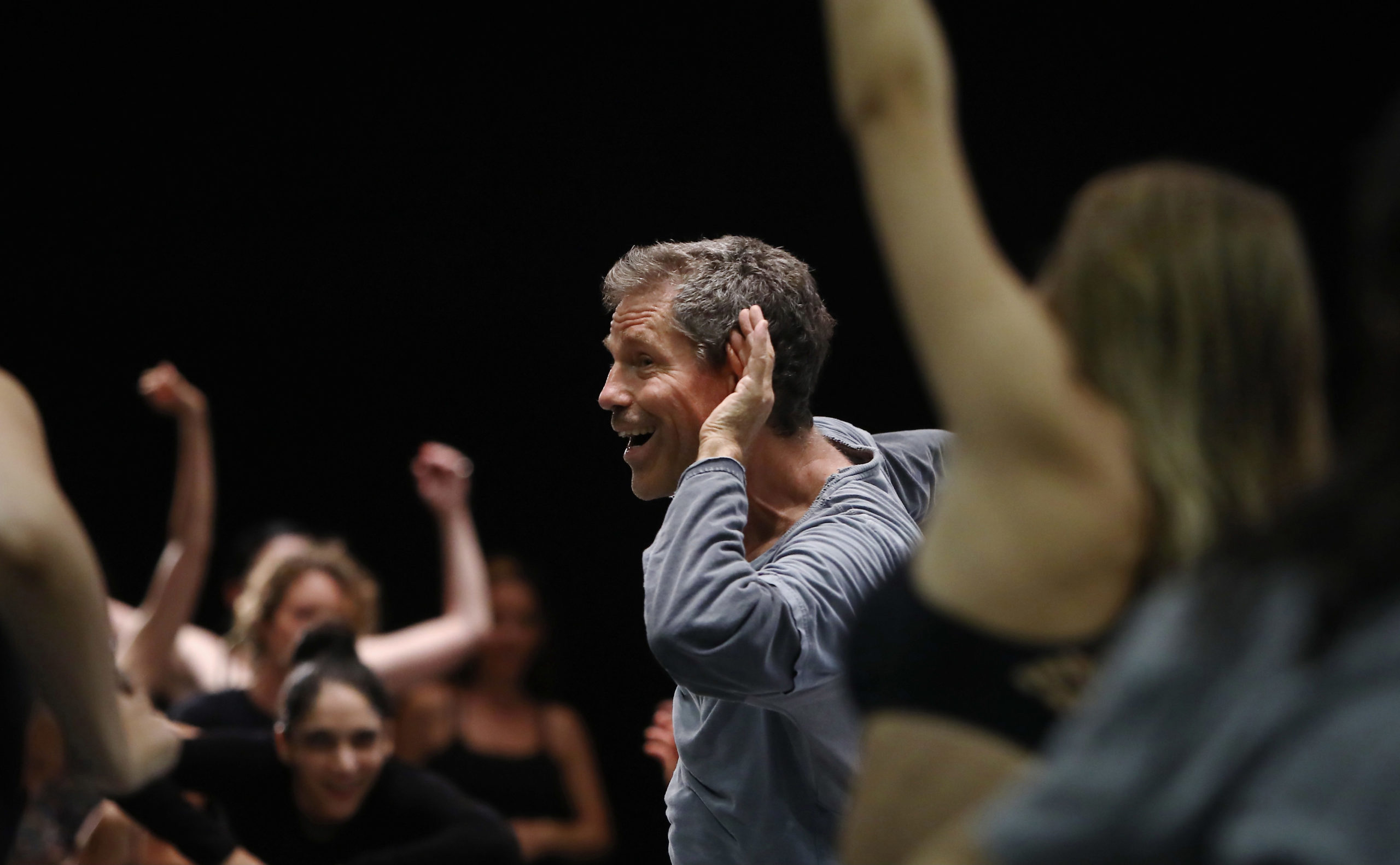Let’s Play: The Value of Bringing Fun Into the Studio
Dancing is hard work.
We live in a culture that valorizes youth, ambition and productivity. With so many prizes, competitions and the advent of sharing on social media, there can be a distorted focus on more, more, more. The physicality of dancing is not easy. Art-making is serious business. The buzzword “rigor” has become synonymous with “integrity.” There are many reasons why we work hard, but what has gotten lost, or, at the very least, obscured?
It can be easy to undervalue the love, joy and playful nonlinearity that underpin the creative journey. In a recent conversation I had with choreographer Jimena Paz, for instance, she lamented the number of her university students who arrive “with so much disillusion that their enjoyment decreases. They say, ‘I don’t enjoy dancing anymore,’ and this is criminal.”
Given that the number of hours we spend in the studio far outweighs the number of hours we have in performance, could we improve the quality of our time in process by reconnecting to some good old-fashioned playtime?
I asked Paz and five other wildly creative mavericks to discuss the hard, intentional work of serious play. Although their backgrounds are seemingly disparate, each of these compelling artists is working to establish a more holistic framework for a playful (yet rigorous) studio environment, even in genres that might not seem to lend themselves so readily to the research of play. While these conversations took place separately, their generous responses to my many questions were so synergistic that they might as well have been sitting around the same (socially distanced) table.
My Guest Artists Are:
- John Gardner, ballet teacher, former soloist with American Ballet Theatre and former member of White Oak Dance Project
- Kayla Hamilton, director of K. Hamilton Projects, movement artist and educator
- Ohad Naharin, house choreographer of Batsheva Dance Company and creator of Gaga movement language
- Jimena Paz, choreographer, dancer, educator and certified Feldenkrais practitioner
- Anginese Phillips, licensed creative arts therapist, board-certified dance/movement therapist, founder of Creative Clarity
- Sam Weber, tap dancer, teacher and choreographer

What does the word “play” evoke for you?
Ohad Naharin: “Playground, skills, rules, joy, game.”
Anginese Phillips: “Adventure, beauty in imagination.”
Sam Weber: “Engaging in an activity for the pleasure—meaning ‘fascination’ or ‘absorption’—of doing it, for its own sake.”
Jimena Paz: “Dismantling the dichotomies of right/wrong and correct/incorrect.”
John Gardner: “A way to help you master technique, which changes how you dance.”
Kayla Hamilton: “Boundaries, possibilities, not knowing, trust, surprise, even responsibility.”
Does play begin in the body or the mind?
Naharin: “No one leads. If we agree that thoughts contribute to the power of our imagination, and if we agree that we need our thoughts in the scope of sensations, then without our thoughts we are numb, dead flesh.”
Phillips: “It depends. With dancers, it’s often the body, then the thoughts, which is often the opposite of nondancers.”
Is “child’s play” actually quite serious?
Paz: “In Feldenkrais, we work like we learn as children. The most powerful things we’ve learned, like walking, talking and being upright, weren’t accomplished through systematic learning. They were learned through exploration, play, trial and error.”
Is everyone allowed to play?
Phillips: “One thing we tend to lose as we become adults is play, which shifts to societal things, like happy hour.”
Hamilton: “Culturally speaking, marginalized communities have fewer opportunities to take risk, to be vulnerable, to show their play in a public space. At least for the Black and disability communities, of which I am a part, there are expectations for what we should and should not be doing.
“In my work, play is in the how/when/why of when movement is described verbally, and these audio descriptions are in the fabric of the dance itself. I explore the tension between access and artistry, and access-for-access, like when it’s too much or when it’s not enough. I’m looking for more ways to decenter eyes for how people consume dance, a kind of conceptual play.”

How does play help us loosen up?
Paz: “In Spanish, jugar means ‘to play’ or ‘to take a chance or risk.’ Play opens a space where we can embrace error, where mistakes aren’t mistakes. One can shut oneself down with perfectionism because often mistakes weigh too much.”
Gardner: “There were teachers, particularly in prior generations, who tried to exact results through humiliation. It makes you so self-conscious, and it kills the fun! Mistakes shouldn’t feel like walking a tightrope, like with one misstep you’re going to fall.”
Weber: “Humor and play have always been very important in collaborating with other dancers and with musicians. It fosters creativity. And in my teaching, humor has come to play an increasingly important role, simply in putting students at ease.”
Naharin: “There is no such thing as ‘symmetrical’ in dance. There is the illusion of symmetry. This is why in Gaga we refer to ‘the pleasure of asymmetry.’ Even in the most clean and similar of sides, in delicate form and movement, the body cannot be symmetrical. Understanding this brings freedom, better quality of movement and clearer form. When we play, we easily recognize that we are far from perfect while being able to produce sublime moments.”
Where do we start?
Phillips: “Can dancers explore their own ideas of play and also their resistance to play? If you can identify one and explore the other, this gives the full polarity of what’s happening.”
Weber: “I usually just noodle around at first. During those first 5 to 10 minutes, new things spontaneously happen without any planning. Everything else tends to be a development of those first few minutes.”
Hamilton “In the body, it takes time to get to the ‘play’ stage. Sometimes I lie down for the whole rehearsal. Or I cry, or call my mom, or journal. Or I get up and play, then sit down and judge [laughs]. It can be helpful to bring in other people. Most of it is about getting out of my own way. Also, with my eyesight changing every day, I’m in the world differently, and I’m playing every day. Like ‘Hey, this countertop is black today! It wasn’t yesterday!’ I am encouraged, forced to do my best to find joy and play in everyday activities.”
How can specific language choices ground a playful environment?
Paz: “In Feldenkrais, there is a removal of the evaluation system. We aren’t aiming for something. The instructor isn’t demonstrating. There is no visual image of what things should look like. Play is in how a direction is interpreted. Everyone finds what best serves them in the moment. Evaluation is so ingrained in us that it is disorienting to remove, but in a good way! Pressure that inhibits us is relieved.”
Naharin: “I try never to instruct people with just ‘don’t.’ Dancers need tasks (what to do) instead of avoidance (what not to do).”
If we’re trying to be so free, why do we need structure?
Weber: “Having a planned structure gives me the confidence that I have something substantial to work with, and that’s freeing. Sometimes I completely abandon what I’ve planned, but having the plan is relaxing, and it allows space for creative ‘accidents.’ ”
Gardner: “From structure comes trust. For my class, I start with a base combination and then explain how to master the base. ‘Where could we go next?’ I treat it like a lab, which is a kind of play. You could add beats, turns, change the tempo. You can make intentional choices when you work with a more nuanced understanding of the music instead of just going with the surface pulse. However, you must be able to dance the base first, like knowing the rules before you break them.”
How does play support creative, holistic growth?
Hamilton: “When we play, there’s a risk of the unknown. You’re growing as a person and artist in that ‘jelly space’ that no one knows about until it lands somewhere. Sometimes the work doesn’t work. It’s painful. In my experience, I use it as fuel for the next thing. I’ll try again. Is it real pain? Maybe it’s ego. Bruised. That’s okay.”
Phillips: “Play can lead to accessing trauma. When we build comfort and trust, the truth comes out and the understanding of what pain is can shift. If we can move the pain, we can explore deeper, in a healthy, safe space.”
Gardner: “Mental blocks are moments when we’re uncomfortable. What’s your first reaction? Is it fear? Is it ‘I can’t do this?’ You never know what you’re capable of until you look at these moments as opportunities.”
Paz: “Range is expanded through new relationships. You decide what is valuable. Articulating different physical relations is playful in Feldenkrais. It opens up the ‘What if?,’ the ‘What’s happening?’ It’s like creating a recipe. How many of us change the recipe? When I experience joy and pleasure, I feel possibility. I go ‘here’ because it feels better, and ‘here’ I’m more potent.”
Naharin: “I sometimes say, ‘Don’t let your ambition manage you,’ which is good advice for all of us ambitious people! In the same breath I will add, ‘Let your curiosity, love of dance, the connection of pleasure and effort manage you.’ ”
Gardner: “One of the greatest things about being a dancer is that you’re responsible for yourself. Don’t wait for someone else to tell you what to do. Dance is what you bring to it as an individual. As a dancer, whether you realize it or not, you are leading by example. Sometimes I see ‘dancer face,’ the persona one feels they have to adopt, and it might be that of a 12-year-old on a mature 25-year-old face. It’s so easy to get lost in the mirror, and when that happens, the play stops, because we’re trying to be something that we’re not. Be yourself.”
How can dancers invite play into their everyday practice?
Phillips: “Start improvising in your usual style. Afterwards, use the same song to explore different movement qualities, even with just one part of the body. Explore the complete opposite, like moving slowly, or more bound or rigid, or more sustained. It’s going to feel weird! Starting with a familiar song may offer support.”
Weber: “Awareness is a big part of it. When you practice, notice what’s different, what’s changing, even if you’re doing the same warm-up that you always do. There’s always something different, if you can be aware of it. And that can change the quality, the ‘flavor’ of the practice.”
Hamilton: “Give yourself physical boundaries, like space, time, energy, effort. Ask yourself why you dance. Expand and stretch the communities you’re part of, so you’re not always dancing with the same people. Laugh!”
Paz: “Carve out private time to be self-directed. Maybe you aren’t even dancing, maybe you’re painting or writing. Play requires autonomy. We might say ‘Make it your own,’ but what does that mean? It’s up to you to be your own engine.”
Gardner: “Identify the opportunities in every combination to find the tension and release, momentum and musical moments. Give yourself at least one thing to do each time. Big things come together because of the small things.”
Naharin: “Dance without mirrors.”





